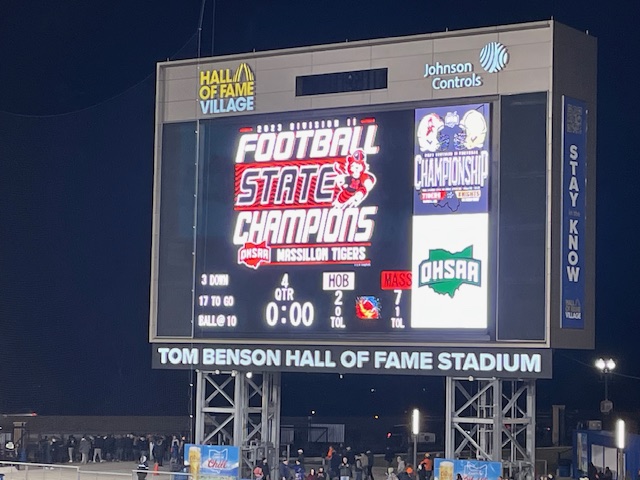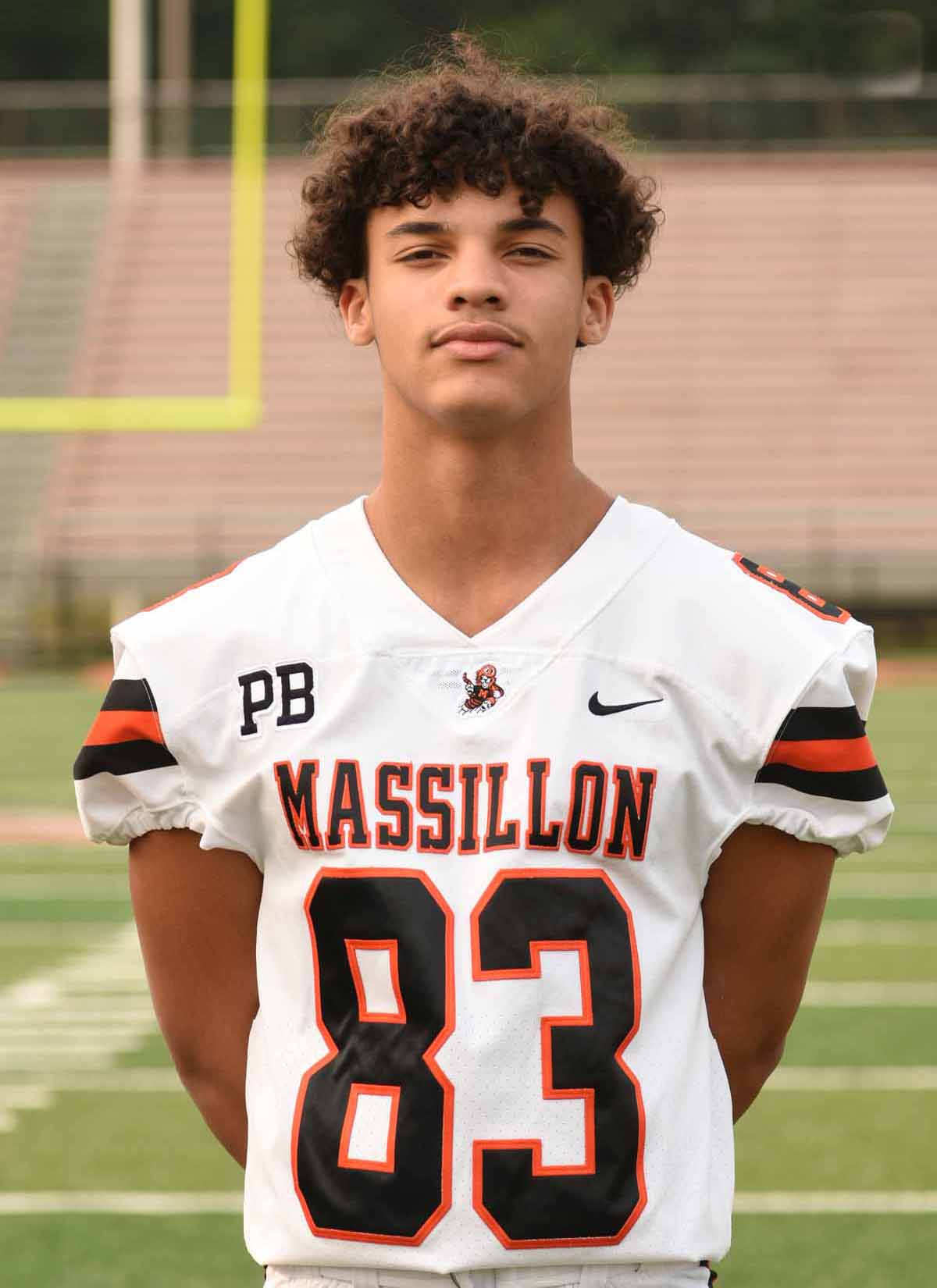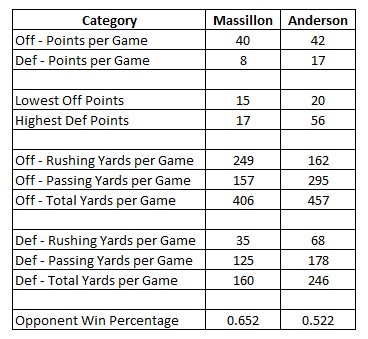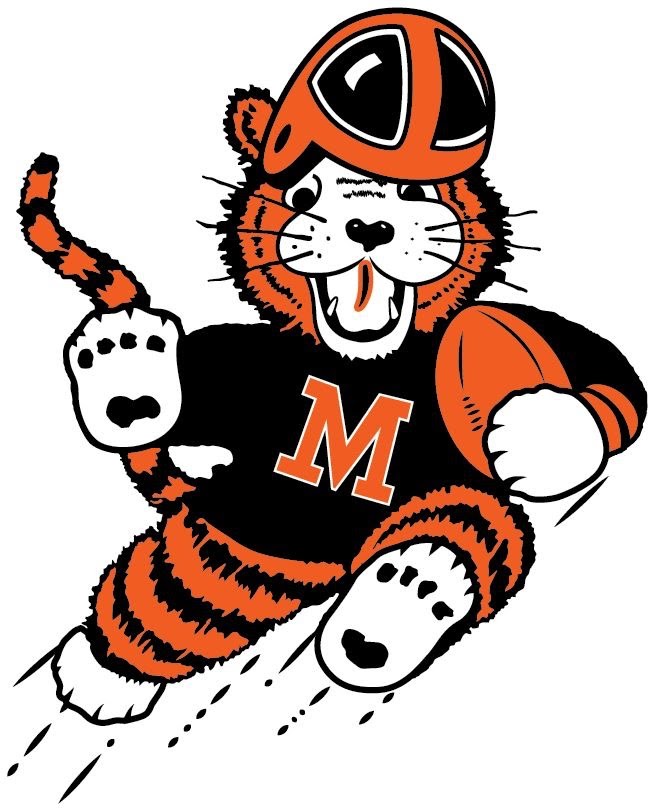 News
News Ten Massillon Players Tapped for All-Ohio Honors; Moore Named…
Ten Massillon Players Tapped for All-Ohio Honors; Moore Named Coach of the Year
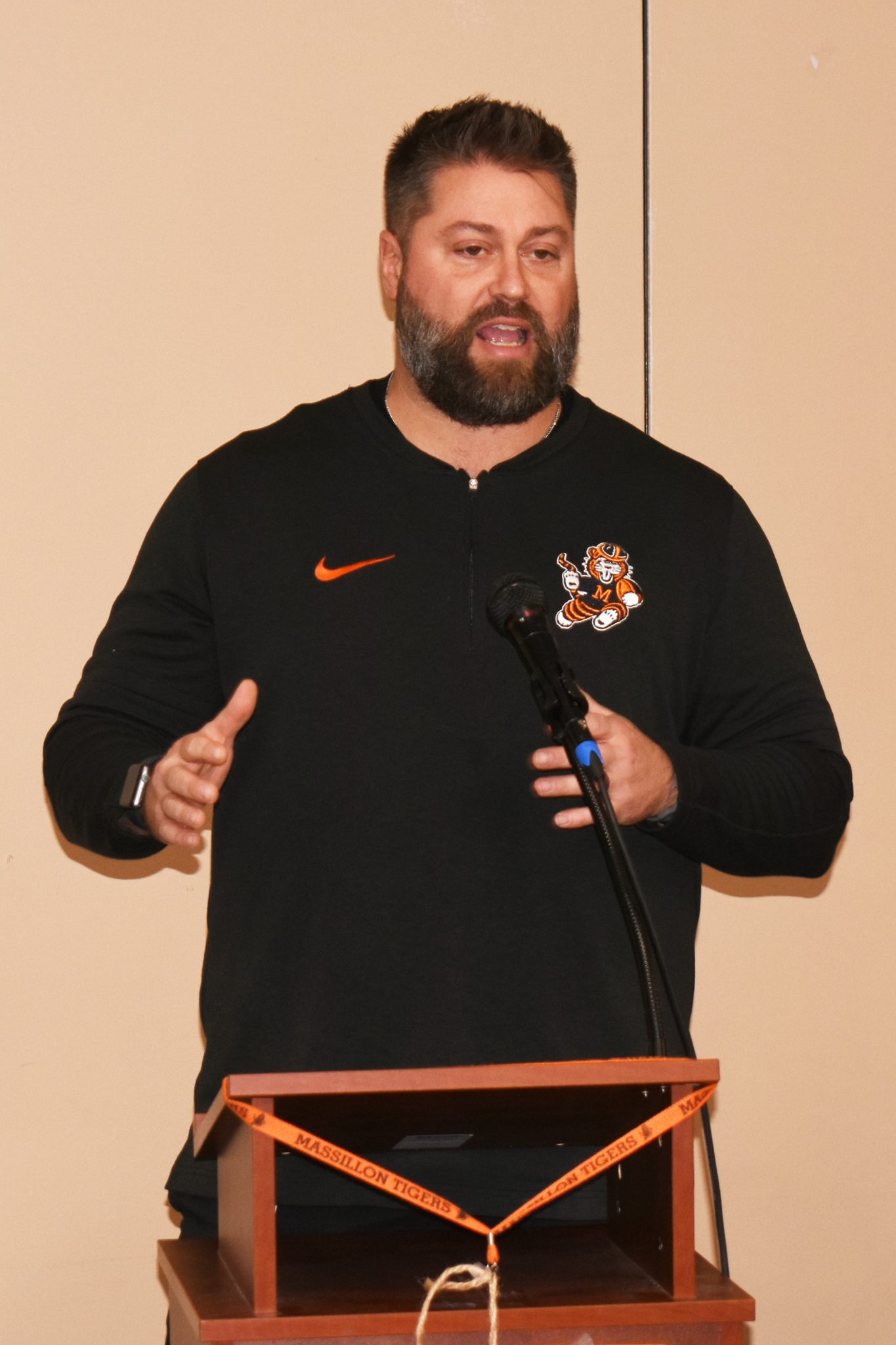
The Massillon Tigers, winner of the 2023 Division II state title, was duly honored by having ten players named to the division’s Ohio All-Star Team, five seniors and five juniors. Headlining the group was Dorian Pringle, who was named the Co-Defensive Player of the Year. In addition, Nate Moore was named Co-Coach of the Year, along with Mike Elder from Avon.
Massillon captured the championship by rolling through a gauntlet of six playoff games and finished the season with a perfect 16-0 record, receiving Top-25 ranking in several national polls. It all culminated in a 7-2 victory over nationally-ranked Akron Hoban, a team that the Tigers had lost to in the state finals twice before, to capture the title. During the regular season, Massillon defeated three national powers, including Valdosta, Georgia, Lakewood St. Edward and St. John’s College, DC. They also downed local rival Canton McKinley in the season finale, 35-0. With the win over Hoban, the Tigers can now rightfully claim that they are the best team in Ohio, given that St. Edward won the Division I state title, with their lone loss coming at the hands of the Tigers (for the second consecutive year).

(l-r) Dorian Pringle, Da’One Owens, Michael Wright Jr., Chase Bond and Nolan Davenport.

(l-r) Cody Fair, Jacques Carter, Ja’Meir Gamble, Tyler Hackenbracht and Brady Jones
First Team
- Dorian Pringle – Senior linebacker (6’-0”, 215). 2-year starter. Recorded 48 unassisted tackles and 38 assisted tackles (61 tackle points). Had a team-high 24.5 tackles-for-loss (126 lost yards) and 8.0 sacks (73 lost yards), with at least 3 TFLs in six different games. Also, carried the ball 50 times for 246 yards (4.9 ave.) and 14 touchdowns. Recovered three fumbles, forced three fumbles, broke up two passes and blocked a kick. Second on the team in scoring with 84 points. Against Akron Hoban in the state finals, recorded 14 total tackles and broke up a pass at the end of the game to secure the win for the state title. On top of that, he made both the first defensive play of the game, a tackle for loss, and this last defensive play. Holds several Division 1 offers. Currently committed to Bowling Green.
- Da’One Owens – Senior quarterback (6’-2”, 200). Completed 94 of 158 passes (60%) for 1,414 yards and 17 touchdowns. Rushed 140 times for a team high 1,302 yards (9.3) and 15 touchdowns. Only Massillon quarterback to rush for over 1,000 yards. Led the team in scoring with 92 points. Passed for 341 yards and 4 touchdowns against Grove City Central Crossing. Rushed for 241 yards and scored 2 touchdowns against Valdosta, GA. Hot on Southern Illinois as a quarterback or running back.
- Mike Wright Jr. – Junior defensive lineman (5’-10”, 280). 3-year starter. Recorded 28.0 tackle points, 15.5 TFLs (loss of 96 yards) and a team-high 10.5 sacks (loss of 76 yards). Broke up three passes and caused two fumbles. Sacked the Canton McKinley quarterback three times. On offense, carried the ball 29 times for 118 yards (4.1 ave.) and 8 touchdowns.
Second Team
- Chase Bond – Senior defensive lineman (6’-4”, 245). 2-year starter. Recorded 20.0 tackle points, 7.5 sacks (loss of 46 yards) and 11.0 tackles-for-loss (loss of 53 yards). Against Anderson, recorded seven tackles, 4.0 TFLs, 3.0 sacks, and blocked and intercepted a pass that he returned for a touchdown. Committed to North Carolina State.
- Nolan Davenport – Junior offensive tackle (6’-6”, 260). 2-year starter. Played tight end in 2022. Used principally as a blocker. Instrumental in helping his team rush for 240 yards per game (6.6 ave.) and 53 rushing touchdowns, while surrendering just 8 quarterback sacks. Holds several Division 1 offers.
Third Team
- Cody Fair – Senior inside linebacker (6’-2”, 220). 2-year starter. Leads the team with 44 solos and 38 assists (63.0 tackle points). Recorded 18.0 TFLs (loss of 61 yards) and 5.0 sacks (loss of 30 yards. Holds several offers and will play at the next level.
Honorable Mention
- Jacques Carter – Junior wide receiver (5’-10”, 160). Caught 41 passes for a team high 796 yards (19.4 ave.) and 7 touchdowns. Caught 8 passes for 142 yards and a touchdown against Middletown, DE. Ran 50 yards for a touchdown against Green.
- Ja’Meir Gamble – Junior running back (5’-10”, 180). Rushed 142 times for 948 yards (6.7 ave.) and 5 touchdowns. Rushed for 233 yards against Austintown Fitch.
- Tyler Hackenbracht – Junior defensive back (6’-2”, 195. Recorded 31 tackle points, broke up 11 passes and intercepted 3 passes, which were returned for 45 yards. Returned 9 punts for 91 yards and 8 kickoffs for 197 yards (24.6 ave.), with a long of 64 yards. Also punted for the Tigers.
- Brady Jones – Senior center (6’-3”, 245). 2-year starter. Instrumental in helping his team rush for 240 yards per game (6.6 ave.) and 53 rushing touchdowns, while surrendering just 8 quarterback sacks.
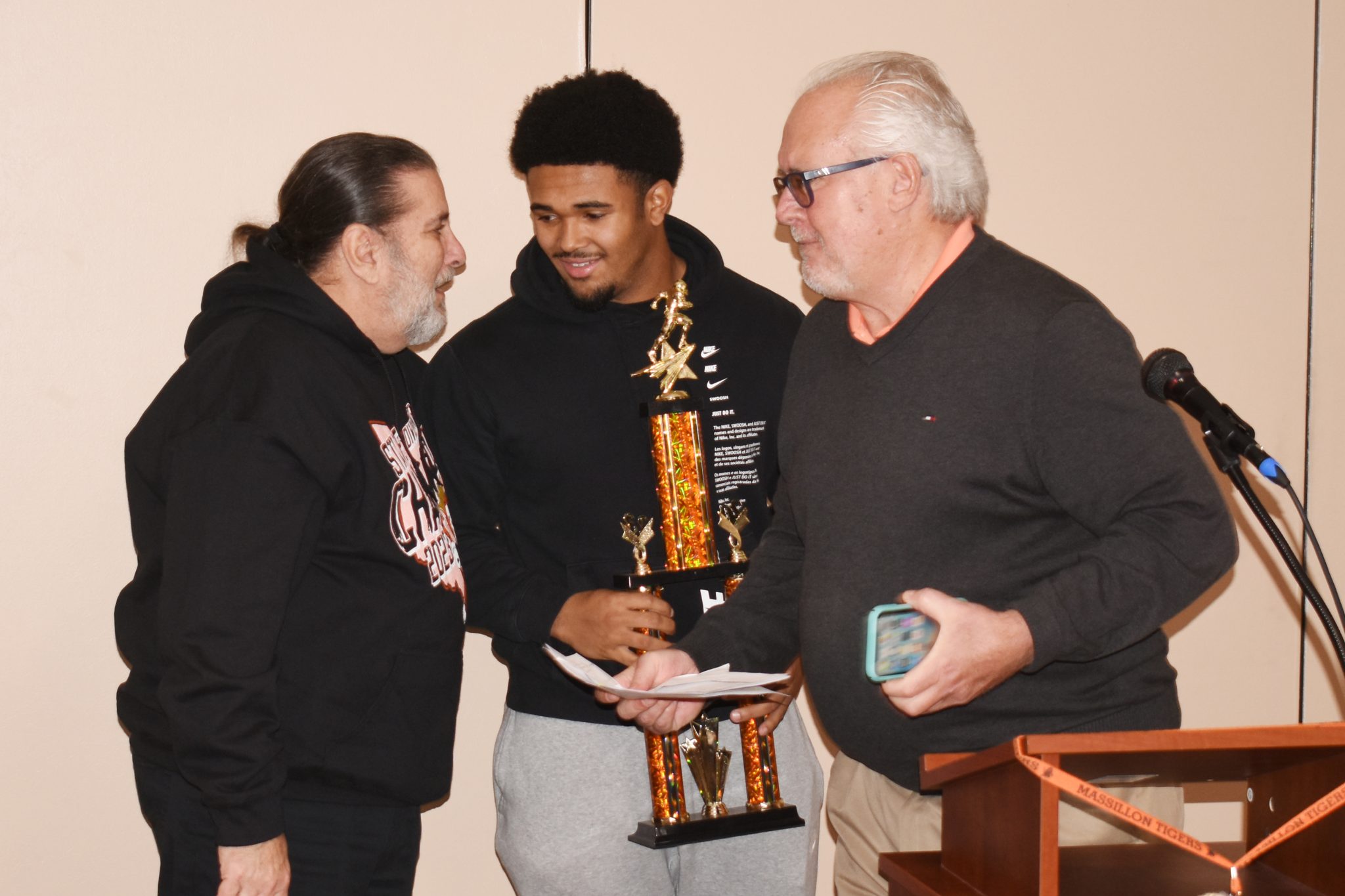
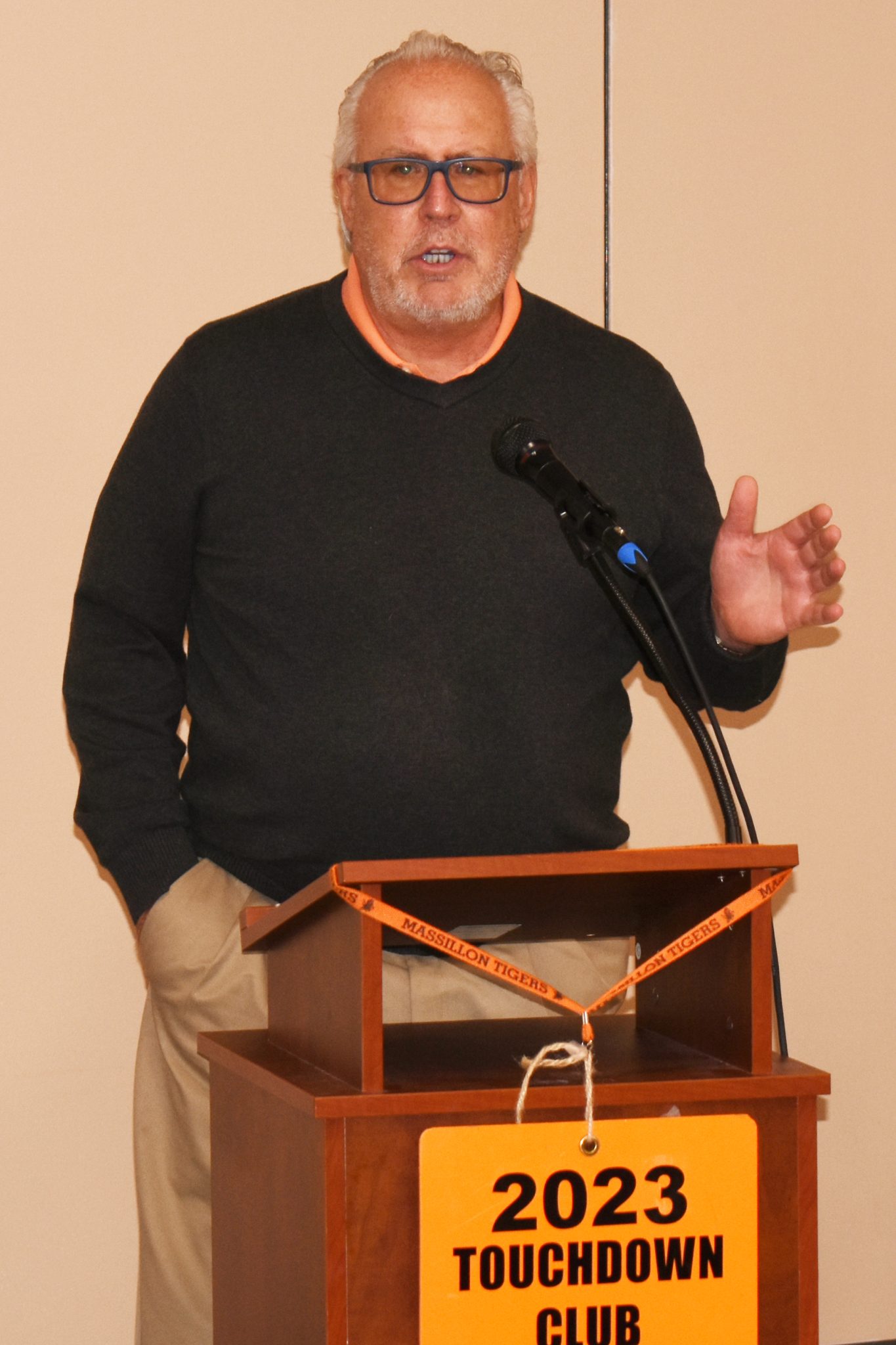

 (l-r) Touchdown Club Chairman George Mizer, Dorian Pringle, Head Coach Nate Moore
(l-r) Touchdown Club Chairman George Mizer, Dorian Pringle, Head Coach Nate Moore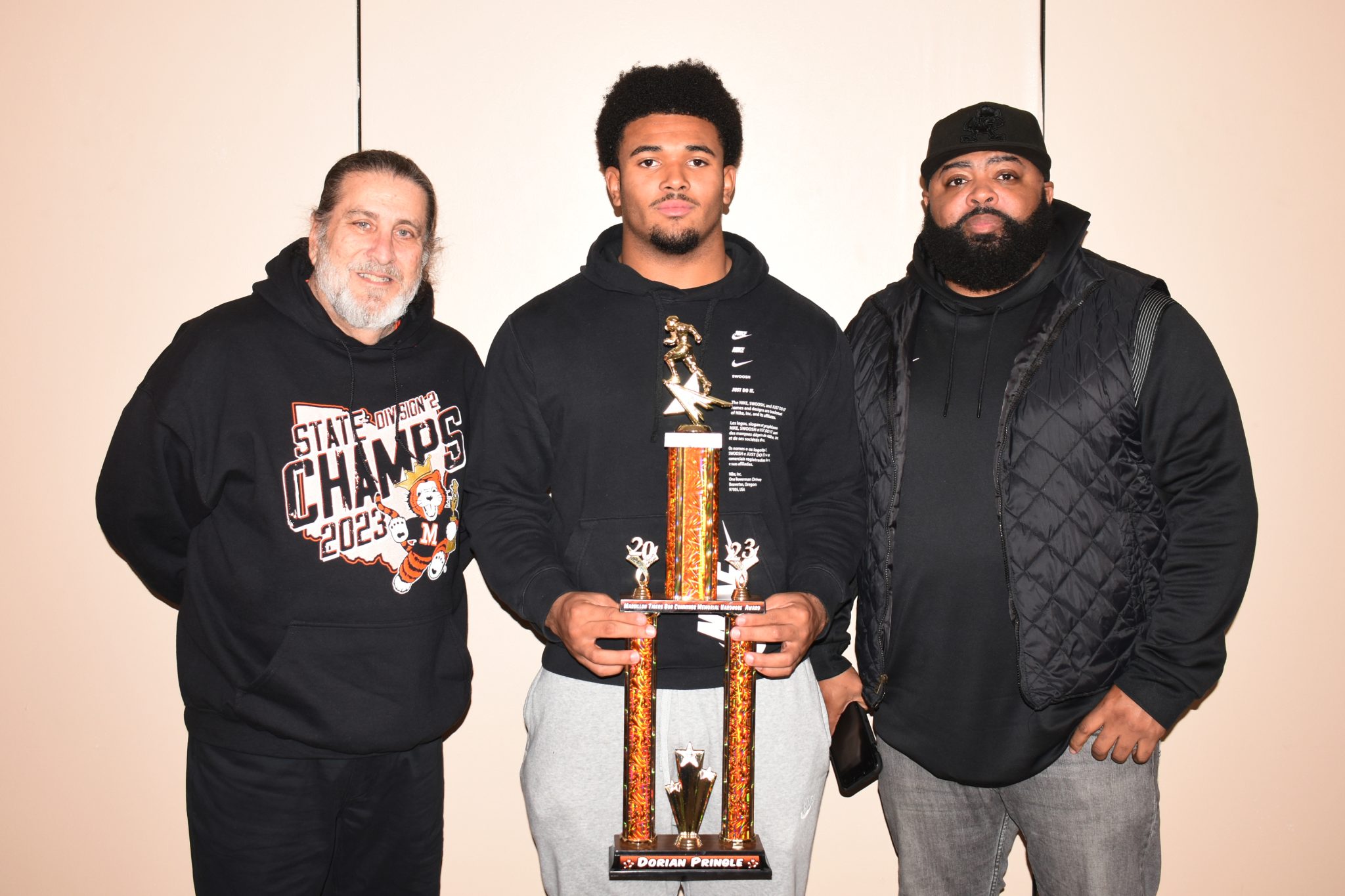

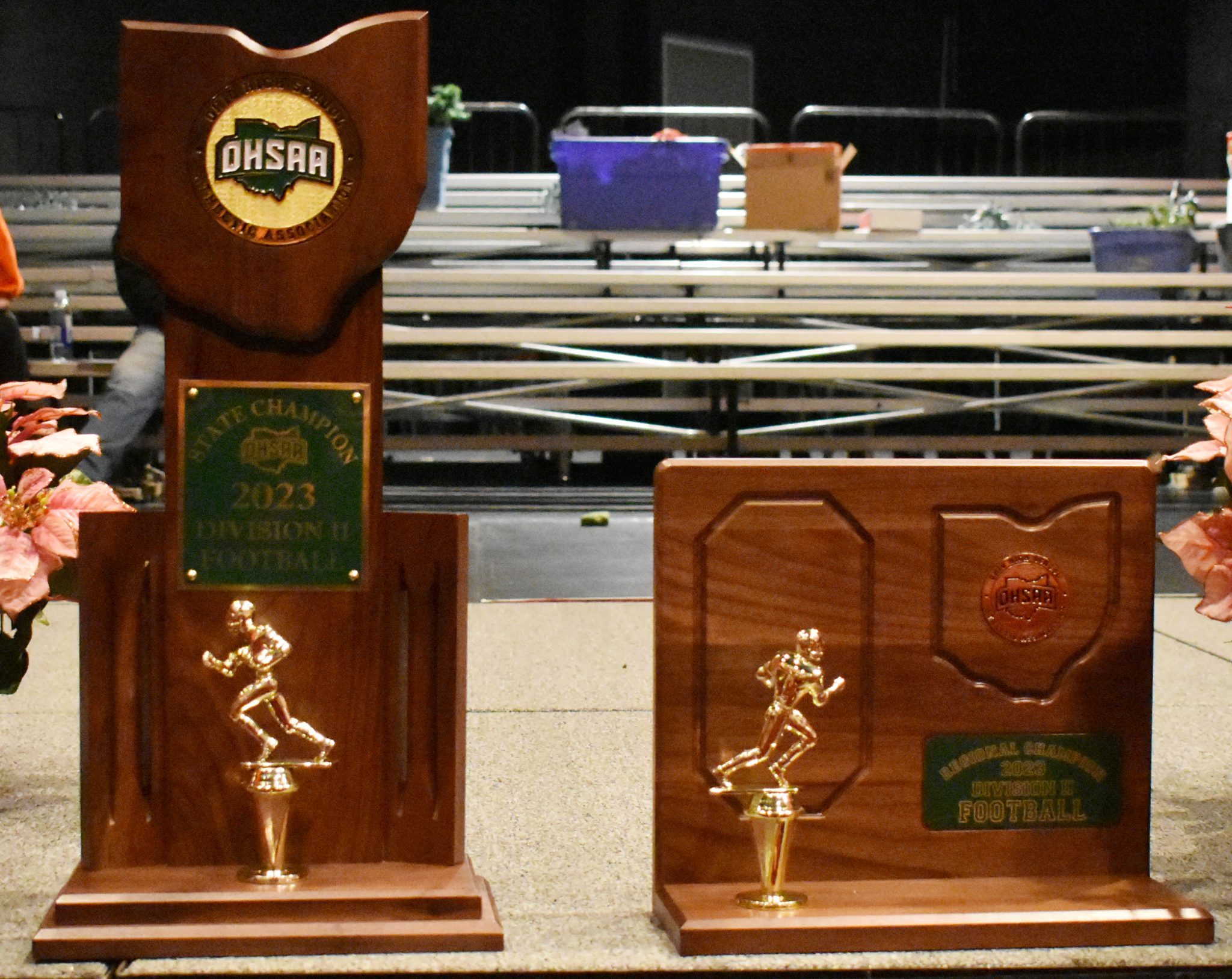 It was win No. 948, which vaults Massillon into the No. 2 position nationally for all-time wins, now tied with Louisville Male, KY, and four games behind Valdosta, GA, a team that the Tigers defeated in the season opener.
It was win No. 948, which vaults Massillon into the No. 2 position nationally for all-time wins, now tied with Louisville Male, KY, and four games behind Valdosta, GA, a team that the Tigers defeated in the season opener.
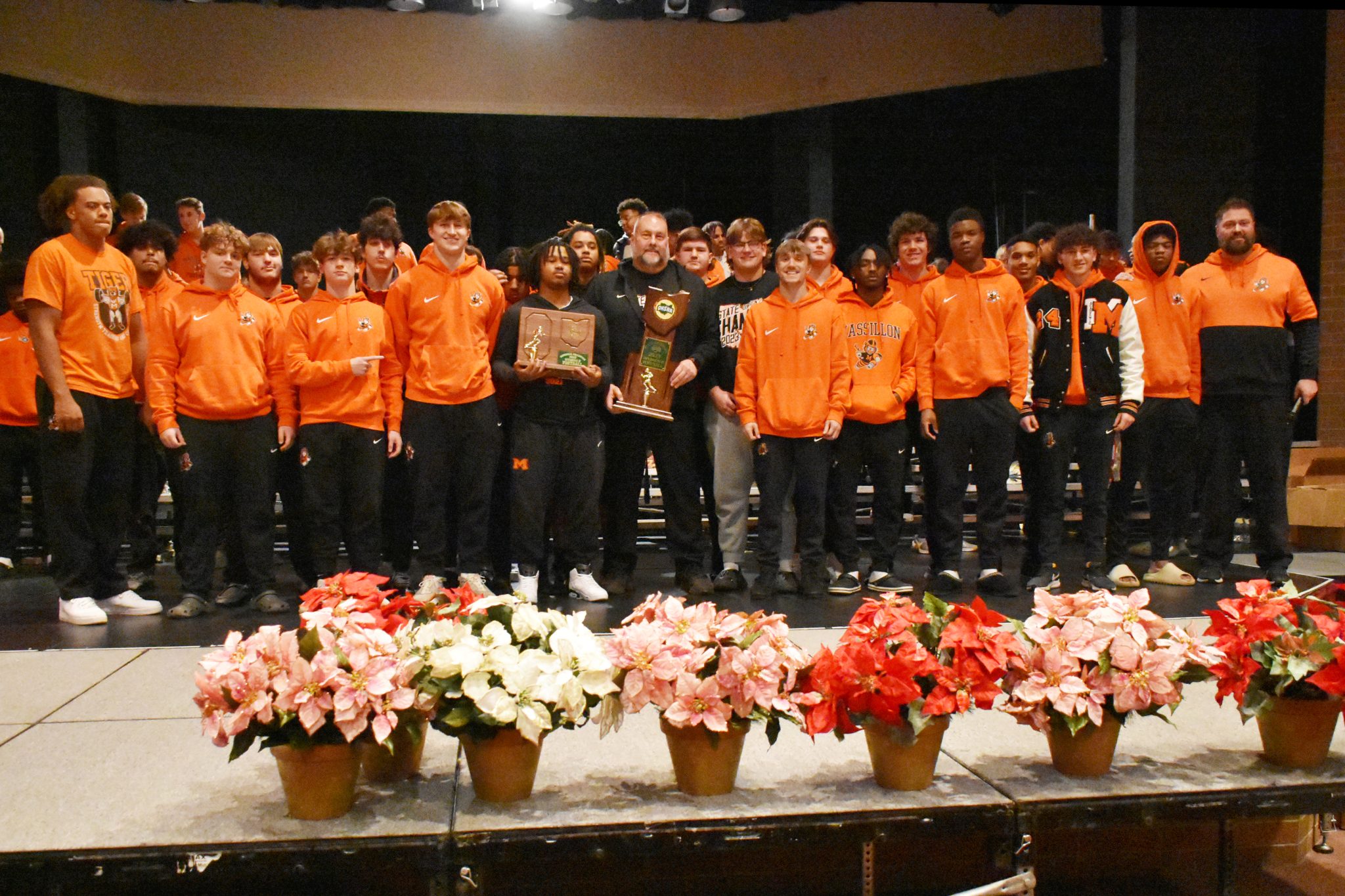
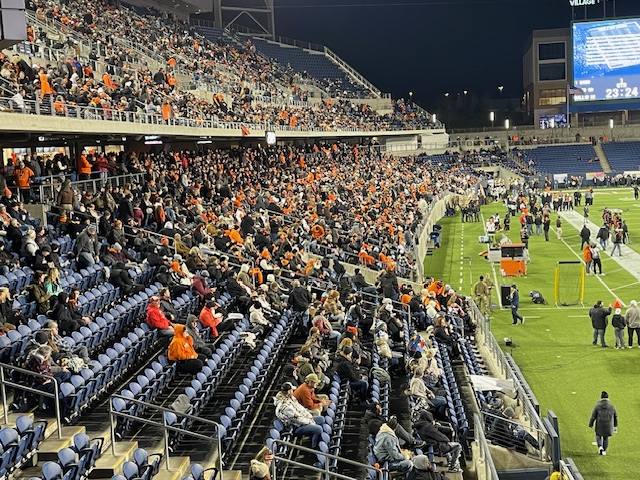


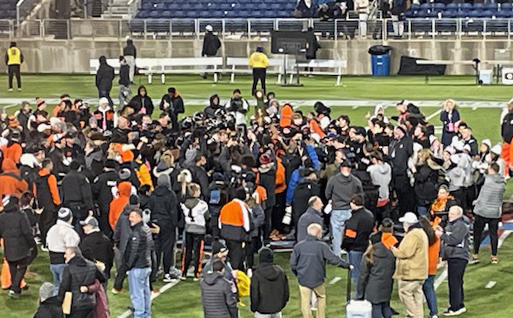 The subsequent celebration by both the players on the field and the fans in the stands was one of the greatest experiences for the Massillon community in a long time. For it’s been 53 years since the last state title and only a small minority of present-day fans were around then. But this one will be cherished for a long time, while an energized Tiger team will gear itself in the off-season to prepare for another deep playoff run.
The subsequent celebration by both the players on the field and the fans in the stands was one of the greatest experiences for the Massillon community in a long time. For it’s been 53 years since the last state title and only a small minority of present-day fans were around then. But this one will be cherished for a long time, while an energized Tiger team will gear itself in the off-season to prepare for another deep playoff run.